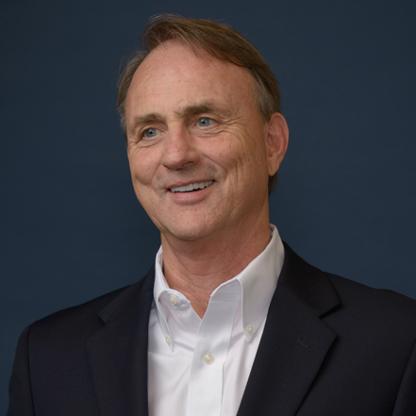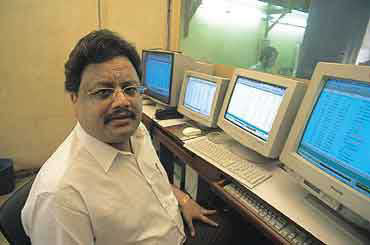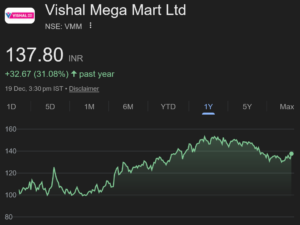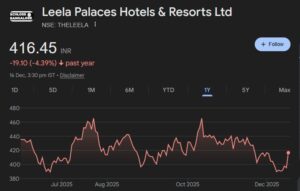
Billionaires know best
According to the rules of the RJ Fan Club, all novices have to pay attention to the sayings and doings of self-made Billionaires.
This is because the Billionaires have walked the path from poverty to riches and know all the secret techniques of how to make big money.
If we walk in their illustrious footsteps, there is a good chance that some of their good luck may rub off onto us and we may also be able to pocket a few mega bucks.
Jon Yarbrough, a self-made Billionaire with a net worth of $2.2 Billion (Rs. 15,000 crore), is the ideal role model for us.
He has a friendly and down-to-earth personality and is always eager to share his secret tips with us.
Diversify, diversify, diversify
When Jon Yarbrough was a youngster like us, he was also smitten by the idea that a concentrated portfolio is the only way to riches.
So, he packed his portfolio with a few tech stocks like Microsoft, etc and pumped all of his savings into them.
He soon realized the folly of his action when the great tech crash of 2000 came.
He lost a colossal 80% of his portfolio overnight and all of his multibagger stocks turned into multibeggars.
At that stage, Jon Yarbrough took the vow that he would never again follow a concentrated portfolio but would instead diversify widely.
“I lost 80% of that money in the dot com bust. I learned about diversification the hard way,” the Billionaire said with a rueful smile.
“The best investment advice I’ve received is to be diversified. Being diversified is the best risk mitigator,” he added.
Perils of concentrated portfolio is shown by Kitex, Manpasand Beverages, PC Jeweller etc
Warren Buffett made it clear that concentrated portfolios are only for those who know what they are doing and that all others should diversify widely to the extent that they should invest in an Index fund.
However, the fact is that even the so-called knowledgeable investors are like Deer caught in headlights when their favourite stocks crash.
Prof Sanjay Bakshi, the authority on value investing, lost a massive chunk of his and his clients’ money when Kitex Garments, a company run by Sabu Jacob, a so-called “intelligent fanatic”, crashed like a house of cards.
Similarly, Sanjoy Bhattacharyya, the doyen amongst value investors, was betrayed by Manpasand Beverages, a stock he wrote reams of praise about.
Brahmal Vasudevan, the visionary founder of Creador/ Idria, was misled by the shenanigans of PC Jeweller and had to say goodbye to a big chunk of capital.
The same is the position overseas.
Bill Ackman, who is nick-named ‘Baby Buffett’ for his stock picking skills, lost a colossal fortune of Rs. 13,000 crore, after Valeant Pharma turned out to be an outright fraud company.
If Ackman has taught us anything, it's that if you run a concentrated portfolio, don't be wrong. https://t.co/G2uyydQRgk
— Michael Batnick (@michaelbatnick) August 3, 2016
Diversification is the only free lunch in investing
At this stage, we have to compliment Billionaire Kevin O’Leary for giving us proper advice.
“Diversification is the only free lunch in investing”, the Billionaire said @17.20.
“I see this happening so many times. Here’s the basic lesson that I’ve learnt that I never vary from. And this works, trust me.
Never more than 5% of your portfolio in any one name no matter how great the story is.
If it is the next Nortel, the next …., who cares.
5% max. For me, usually it is 2 ½ to 3%.
I never let a stock get bigger than that in my portfolio,” O’Leary said.
“Secondly, never ever, ever, more than 20% in any one sector,” he added.
I have held stocks for 30+ years
Jon Yarbrough made it clear that he is the textbook example of a classic buy-and-hold investor.
“I’m looking to buy and hold stocks, not trade. I’ve held Apple stock for over a decade, Microsoft for 20 to 30 years. I like stocks I can buy and forget about,” he said.
In fact, Yarbrough was allotted a paltry 100 shares of Microsoft in 1986, when it went public.
Though his broker cajoled him into booking profit, Yarbrough stayed put and instead added more stock to his portfolio.
Needless to say, Microsoft has showered incalculable riches upon the wily Billionaire in the decades that have gone by.
Billionaire Jon Yarbrough is a buy-and-hold investor, he’s owned Microsoft for 30 years and Apple for over a decadehttps://t.co/Ll2CsINSE8 pic.twitter.com/ci9b7sOueA
— Forbes (@Forbes) October 23, 2018
It is worth recalling that other Billionaires also follow a buy-and-hold approach.
Carl Icahn articulated this in explicit terms.
“I was surprised myself about the long-termism that we do .. ACF, I hold 31 years …. I hate to admit that I hold these stocks for this long … American Rail Car Industries, 23 years, PSC Metal, 17 years, Federal Mogul, 14 years, Viscase, 14 years, Accel, 14 years…. It goes on and on” he said.
“The real money that I made over the years is holding companies for 7, 8, 9 years and keeping them ….. You got to buy them when nobody wants them really …. That’s the real secret …. It sounds very simple but it is very hard to do … when everybody hates it, you buy them … and then when everybody wants it, you sell it to them … And that’s what we do” he explained.
Even Rakesh Jhunjhunwala, the Badshah of Dalal Street, is the ultimate buy-and-hold investor.
This secret was revealed by none other than Mohnish Pabrai.
“Rakesh Jhunjhunwala has this persona of a guy who sits in front of three screens, talking to people all the time and all this activity is going on. But then in his portfolio, Titan doesn’t get touched for decades. Lupin doesn’t get touched. The crown jewels don’t get played with,” Mohnish said with admiration in his voice.

(Rakesh Jhunjhunwala, as a youngster, with four trading terminals before him)
Forget PMS Funds, they are fantastic for fund managers but bad for investors
Some novices have a fascination for investing in PMS Funds (the Indian avatar of Hedge Funds) in the misconception that they will outperform their peers who are investing in Mutual Funds.
However, as we have seen in the recent past, the PMS Funds run by various local Gurus have put up a poor show and underperformed mutual funds.
In fact, Warren Buffett and Charlie Munger have already warned us not to fall prey and invest in PMS Funds.
“There’s been far, far, far more money made by people in Wall Street through salesmanship abilities than through investment abilities” Warren said bluntly.
“The compensation charged by hedge fund managers is unbelievable to me” he added.
Warren also took a dig at the concept of hiring consultants for advice on where to invest.
“No consultant in the world is going to tell you ‘Just buy an S&P index fund and sit for the next 50 years. You don’t get to be a consultant that way, and you certainly don’t get an annual fee that way” he said.
Warren Buffett wins $1M bet made a decade ago that the S&P 500 stock index would outperform hedge funds, and it wasn't even close – AEI https://t.co/JL9kNYmr6T
— Mark J. Perry (@Mark_J_Perry) January 3, 2018
If you've invested $1,000 with Buffett in 1965 would currently hold $4.3 million. However, if Berkshire had been a hedge fund charging 2 & 20, that $4.3 million would have accrued $300K to the investor with a stunning $4 million to the manager.-Terry Smith in 2010. via @dmuthuk
— Steve Burns (@SJosephBurns) August 20, 2018
Buffett on his hedge-fund bet: “Performance comes, performance goes. Fees never falter.”
Would make the perfect country-song lyrics…
— Leslie Picker (@LesliePicker) February 25, 2018
Warren Buffett doesn’t much respect hedge fund managers’ skills. And based on how they responded to his 2007 wager, they don’t have much respect for their skills either. https://t.co/ZdBCiWOmlf
— The Motley Fool (@themotleyfool) January 10, 2018
This belief of Warren Buffett and Charlie Munger is endorsed by Billionaire Jon Yarbrough.
“They are fantastic for hedge fund managers, but bad for investors,” he said in a contemptuous tone.







Yes one should also invest in NIFTY ETF via doing SIP.Aggressive Hybrid funds are also good option as they can keep on re balancing portfolio, which individual may find difficult.